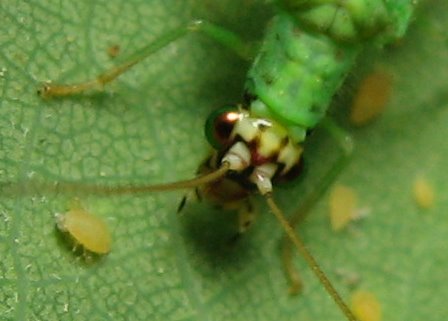Nutrition
The Chrysopa oculata survives mostly
on a diet of sugar, water, and
pea aphids (Tauber
and Tauber 1973).
Pea aphids are small bugs that can severely damage crops, such
as peas and alfalfa (Integrated pest management North Carolina
2012). Because of this, Chrysopa oculata are often used as
biological control agents to keep these aphids from completely
destroying certain gardens and harvests (Dunn 1996). When
mating season arrives the females must prey completely on pea aphids to
produce fertile eggs, while the males do not need this source of
food for reproduction (Tauber and Tauber 1973). Current research
shows that certain chemicals, such as iridodial, can be used to
draw Chrysopa oculata to a particular field or area to lay their
eggs. This would allow the newly hatched, predacious
goldeneyed lacewings to consume large amounts of other pests,
such as aphids. This is a new technology in targeting
certain areas for specific biological pest control (Chauhan et
al.
2007).
